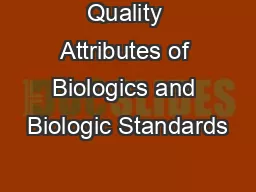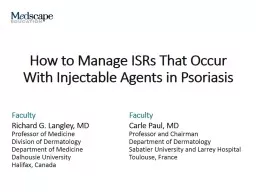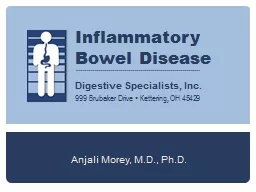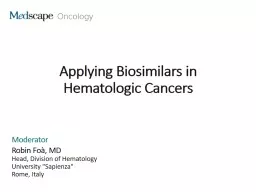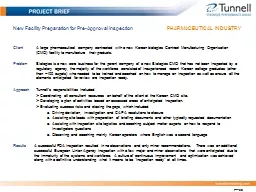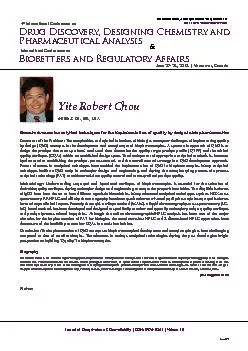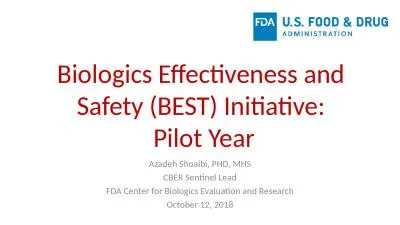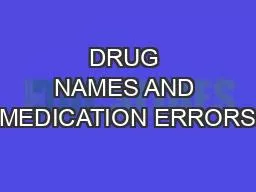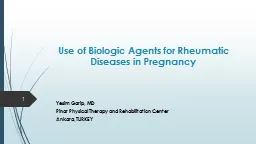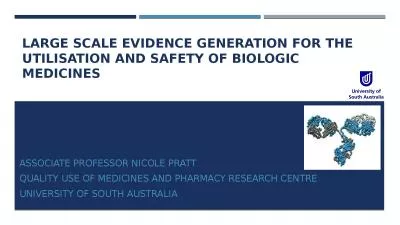PPT-Quality Attributes of Biologics and Biologic Standards
Author : stefany-barnette | Published Date : 2018-12-15
Ranjan Chakrabarti PhD Vice President Biologics and Biotechnology US Pharmacopeial Convention India USP and NF Are Official Compendia USP Is Cited in Law 1848
Presentation Embed Code
Download Presentation
Download Presentation The PPT/PDF document "Quality Attributes of Biologics and Biol..." is the property of its rightful owner. Permission is granted to download and print the materials on this website for personal, non-commercial use only, and to display it on your personal computer provided you do not modify the materials and that you retain all copyright notices contained in the materials. By downloading content from our website, you accept the terms of this agreement.
Quality Attributes of Biologics and Biologic Standards: Transcript
Ranjan Chakrabarti PhD Vice President Biologics and Biotechnology US Pharmacopeial Convention India USP and NF Are Official Compendia USP Is Cited in Law 1848 Drug Import Act. 1. PEG Nanoparticles: . Production . and Drug Delivery. Structure and Function. Principles of the . NanoKit. :. A Laboratory Educational Tool . Syed K. Hasan M.D. . Ph.D. CEO/President. . Arthur . Introduction. MOA and Dosing of Approved Biologics Administered Via SC Injection . Efficacy of Approved Biologics Administered Via SC Injection . ISRs: How Do They Manifest and When Do They Occur?. Potential Factors Leading to Occurrence . main findings. June 2016. Jacqui Lyttle. Report author. What will I cover?. Why did we undertake the review? . What did the review cover?. Some key headlines/messages. What is working well?. What is working less well?. Anjali Morey, M.D., Ph.D.. Digestive Specialists, Inc. . 999 Brubaker Drive. . • . Kettering, OH 45429. Which would be considered a . high risk Crohns Disease patient?. Highly Symptomatic. Advanced age of disease onset. Hank . Canitz. – Sr. Director Industry Solutions, QAD Marketing. QAD Midwest User Group. 2. The following is intended to outline QAD’s general product direction. It is intended for information purposes only, and may not be incorporated into any contract. It is not a commitment to deliver any material, code, functional capabilities, and should not be relied upon in making purchasing decisions. The development, release, and timing of any features or functional capabilities described for QAD’s products remains at the sole discretion of QAD.. This program will include a discussion of off-label treatments and investigational agents not approved by the FDA for use in the US, and data that were presented in abstract form. These data should be considered preliminary until published in a peer-reviewed journal.. for Pre-Approval . Inspection . PHARMACEUTICAL INDUSTRY. Client . . A. l. arge pharmaceutical company contracted with a. . new . Korean . biologics Contract Manufacturing Organization (CMO) facility to manufacture their products.. Page 39
Yite Robert Chou, J Bioquiv Availab 2018, Volume 10
Notes:
Journal of Bioequivalence & Bioavailability | ISSN: 0975-0851 | Volume 10Drug Discovery, Designing Chemistry and Pharmaceutical Analy Safety (BEST) Initiative: . Pilot Year. Azadeh Shoaibi, PHD, MHS. CBER Sentinel Lead. FDA Center for Biologics Evaluation and Research. October 12, 2018. Outline. What are Biologics? . BEST Initiative: a component of the CBER Sentinel Program. 1. DRUG NAMES. Chemical name. Development name used internally. Biologic drugs too complex to use chemical name. Non-proprietary name (generic name). Combination name for some combination drugs. Proprietary name (brand name). . for. . Rheumatic. . Diseases. . in . Pregnancy. Yesim. . Garip, MD. Pinar. . Physical. . Therapy. . and. . Rehabilitation. Center. Ankara, . TURKEY. 1. The most common used biologic therapeutic agents . . presented by. . Dipali Balaji Waghmare (Intern) . BIOLOGIC CONSIDERATION.
Download Document
Here is the link to download the presentation.
"Quality Attributes of Biologics and Biologic Standards"The content belongs to its owner. You may download and print it for personal use, without modification, and keep all copyright notices. By downloading, you agree to these terms.
Related Documents

